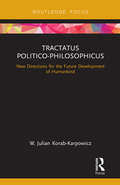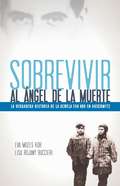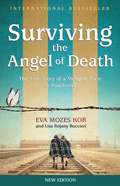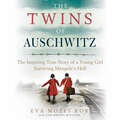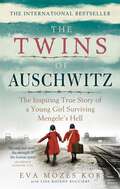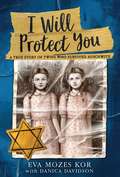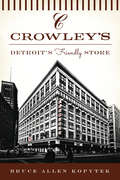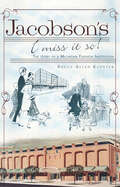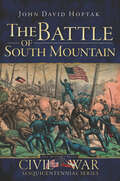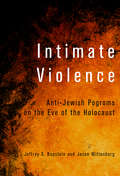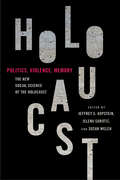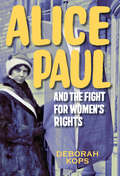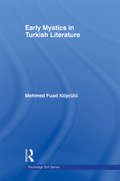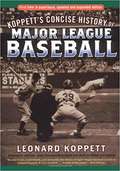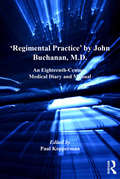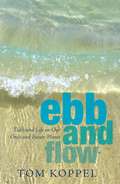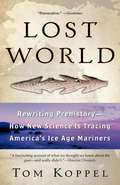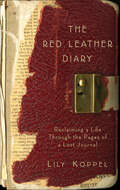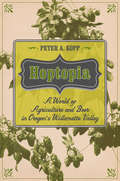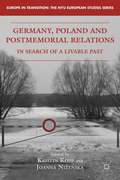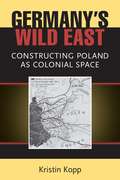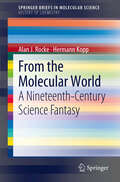- Table View
- List View
The Lake Shore Electric Railway Story
by Robert S. Korach Herbert H. Harwood Jr.From 1901 to 1938 the Lake Shore Electric claimed to be--and was considered by many--"The Greatest Electric Railway in the United States." It followed the shore of Lake Erie, connecting Cleveland and Toledo with a high-speed, limited-stop service and pioneered a form of intermodal transportation three decades before the rest of the industry. To millions of people the bright orange electric cars were an economical and comfortable means of escaping the urban mills and shops or the humdrum of rural life. In summers during the glory years there were never enough cars to handle the crowds. After reaching its peak in the early 1920s, however, the Lake Shore Electric suffered the fate of most of its sister lines: it was now competing with automobiles, trucks, and buses and could not rival them in convenience. The Lake Shore Electric Railway Story tells the story of this fascinating chapter in interurban transportation, including the missed opportunities that might have saved this railway.
Tractatus Politico-Philosophicus: New Directions for the Future Development of Humankind
by W. Julian Korab-Karpowicz"Our time is the age of postmodernity and of the clash of epochs. But a new age of humanity is rising. It is evolutionity or the evolutionary epoch which replaces modernity and postmodernity." Tractatus Politico-Philosophicus (Political-Philosophical Treatise) aims to establish the principles of good governance and of a happy society, and to open up new directions for the future development of humankind. W. Julian Korab-Karpowicz demonstrates the necessity of, and provides a guide for, the redirection of humanity. He argues that this paradigm shift must involve changing the character of social life and politics from competitive to cooperative, encouraging moral and intellectual virtues, providing foundations for happy societies, promoting peace among countries and building a strong international community. Korab-Karpowicz’s seven principles for a happy society are: Cooperation Justice Wise Leadership and Civic Virtues Education for Virtue and Knowledge Good Laws Political Knowledge Continuity of Generations
Sobrevivir al ángel de la muerte
by Eva Mozes Kor Lisa Rojany BuccieriEva Mozes Kor tenía 10 años cuando llegó al campo de exterminio de Auschwitz. Mientras que sus padres y sus dos hermanas mayores fueron conducidos a las cámaras de gas, ella y su hermana gemela, Miriam, fueron depositadas al cuidado de un hombre conocido como el Ángel de la Muerte, el Dr. Josep Mengele. Sometidas a sádicos experimentos médicos, Eva se vio obligada a luchar cada día para que ella y su hermana pudieran sobrevivir. En esta increíble pero real historia, escrita para jóvenes adultos, los lectores conocerán la resistencia de una niña por sobrevivir frente a tanta horrible maldad. El libro incluye un epílogo en el que se explica cómo Eva logró superar esta terrible experiencia, además de su increíble decisión de perdonar públicamente a los nazis. A través de su museo y de sus conferencias, Eva ha dedicado toda su vida a dar testimonio del Holocausto, y a brindar un mensaje de esperanza a las personas que han sufrido en la vida y trabajan a favor de las causas por los derechos humanos y por la paz.
Surviving the Angel of Death: The True Story of a Mengele Twin in Auschwitz
by Eva Mozes Kor Lisa Rojany BuccieriEva Mozes Kor was just ten years old when she arrived in Auschwitz. While her parents and two older sisters were taken to the gas chambers, she and her twin, Miriam, were herded into the care of the man known as the Angel of Death, Dr. Josef Mengele. Subjected to sadistic medical experiments, she was forced to fight daily for her and her twin's survival. In this incredible true story written for young adults, readers learn of a child's endurance and survival in the face of truly extraordinary evil and Eva's recovery and her controversial but often misunderstood decision to publicly forgive the Nazis. Readers will learn of how she triumphed over unfathomable pain and suffering into a life-long work for peace, human rights, and Holocaust education. The new edition provides interesting details and important context to the events related in the original story. A new Afterword by publisher Peggy Porter Tierney offers a richer portrayal of Eva as a person, the truth behind the controversies, and the eventful last ten years of her life.
The Twins of Auschwitz: The inspiring true story of a young girl surviving Mengele's hell
by Eva Mozes Kor Lisa Rojany BuccieriThe Nazis spared their lives because they were twins.In the summer of 1944, Eva Mozes Kor and her family arrived at Auschwitz.Within thirty minutes, they were separated. Her parents and two older sisters were taken to the gas chambers, while Eva and her twin, Miriam, were herded into the care of the man who became known as the Angel of Death: Dr. Josef Mengele. They were 10 years old.While twins at Auschwitz were granted the 'privileges' of keeping their own clothes and hair, they were also subjected to Mengele's sadistic medical experiments. They were forced to fight daily for their own survival and many died as a result of the experiments, or from the disease and hunger rife in the concentration camp.In a narrative told simply, with emotion and astonishing restraint, The Twins of Auschwitz shares the inspirational story of a child's endurance and survival in the face of truly extraordinary evil.Also included is an epilogue on Eva's incredible recovery and her remarkable decision to publicly forgive the Nazis. Through her museum and her lectures, she dedicated her life to giving testimony on the Holocaust, providing a message of hope for people who have suffered, and worked toward goals of forgiveness, peace, and the elimination of hatred and prejudice in the world.All images from the book are included in the accompanying pdf. This audiobook was recorded remotely in June 2020 during the Covid-19 pandemic. (P) 2020 Octopus Publishing Group
The Twins of Auschwitz: The inspiring true story of a young girl surviving Mengele's hell
by Eva Mozes Kor Lisa Rojany BuccieriTHE SUNDAY TIMES BESTSELLER The Nazis spared their lives because they were twins.In the summer of 1944, Eva Mozes Kor and her family arrived at Auschwitz.Within thirty minutes, they were separated. Her parents and two older sisters were taken to the gas chambers, while Eva and her twin, Miriam, were herded into the care of the man who became known as the Angel of Death: Dr. Josef Mengele. They were 10 years old.While twins at Auschwitz were granted the 'privileges' of keeping their own clothes and hair, they were also subjected to Mengele's sadistic medical experiments. They were forced to fight daily for their own survival and many died as a result of the experiments, or from the disease and hunger rife in the concentration camp.In a narrative told simply, with emotion and astonishing restraint, The Twins of Auschwitz shares the inspirational story of a child's endurance and survival in the face of truly extraordinary evil.Also included is an epilogue on Eva's incredible recovery and her remarkable decision to publicly forgive the Nazis. Through her museum and her lectures, she dedicated her life to giving testimony on the Holocaust, providing a message of hope for people who have suffered, and worked toward goals of forgiveness, peace, and the elimination of hatred and prejudice in the world.
The Twins of Auschwitz: The inspiring true story of a young girl surviving Mengele's hell
by Eva Mozes Kor Lisa Rojany BuccieriTHE SUNDAY TIMES BESTSELLER The Nazis spared their lives because they were twins.In the summer of 1944, Eva Mozes Kor and her family arrived at Auschwitz.Within thirty minutes, they were separated. Her parents and two older sisters were taken to the gas chambers, while Eva and her twin, Miriam, were herded into the care of the man who became known as the Angel of Death: Dr. Josef Mengele. They were 10 years old.While twins at Auschwitz were granted the 'privileges' of keeping their own clothes and hair, they were also subjected to Mengele's sadistic medical experiments. They were forced to fight daily for their own survival and many died as a result of the experiments, or from the disease and hunger rife in the concentration camp.In a narrative told simply, with emotion and astonishing restraint, The Twins of Auschwitz shares the inspirational story of a child's endurance and survival in the face of truly extraordinary evil.Also included is an epilogue on Eva's incredible recovery and her remarkable decision to publicly forgive the Nazis. Through her museum and her lectures, she dedicated her life to giving testimony on the Holocaust, providing a message of hope for people who have suffered, and worked toward goals of forgiveness, peace, and the elimination of hatred and prejudice in the world.
I Will Protect You: A True Story of Twins Who Survived Auschwitz
by Eva Mozes KorThe illuminating and deeply moving true story of twin sisters who survived Nazi experimentation, against all odds, during the Holocaust.Eva and her identical twin sister, Miriam, had a mostly happy childhood. Theirs was the only Jewish family in their small village in the Transylvanian mountains, but they didn't think much of it until anti-Semitism reared its ugly head in their school. Then, in 1944, ten-year-old Eva and her family were deported to Auschwitz. At its gates, Eva and Miriam were separated from their parents and other siblings, selected as subjects for Dr. Mengele's infamous medical experiments.During the course of the war, Mengele would experiment on 3,000 twins. Only 160 would survive--including Eva and Miriam.Writing with her friend Danica Davidson, Eva reveals how two young girls were able to survive the unimaginable cruelty of the Nazi regime, while also eventually finding healing and the capacity to forgive. Spare and poignant, I Will Protect You is a vital memoir of survival, loss, and forgiveness.
Crowley's: Detroit's Friendly Store (Landmarks)
by Bruce Allen KopytekOperating in the shadow of the enormous J.L. Hudson Co., Crowley's earned Detroit's trade with fine merchandise and good service, all in an atmosphere that made it the Motor City's "friendly" department store. Generations of customers still hold Crowley's close in their memories, fondly recalling the store's ancient wooden escalators, fashionable merchandise and special events like "Breakfast with Santa." Wander back in time with historian Bruce Allen Kopytek through the venerable old store and its suburban branches to discover all the things that made Crowley's such a special retail destination.
Jacobson's, I Miss It So!: The Story of a Michigan Fashion Institution (Landmarks)
by Bruce Allen KopytekJoin department store historian Bruce Allen Kopytek in this history of Jacobson's, a beloved Michigan institution for over 100 years. Winner of the Michigan Notable Book Award for 2012.Reenter the marvelous stores and meet the personalities who transformed Jacobson's from its humble Reed City origins to a staple of sophistication throughout Michigan and into the rest of the country. The brainchild of a retail genius, this deluxe specialty store gave customers a peerless social, shopping and dining destination. Experience anew the refined beauty of its Williamsburg-style Grosse Pointe store, the chic designer world of its Birmingham ensemble, or the charm and allure of its original Florida branch in Sarasota, revealing the secrets which made Jake's the dazzling store it was, and why it remains so profoundly missed by anyone who entered through its solid wooden doors.
Toledo's Three Ls: Lamson's, Lion Store and Lasalle's (Landmarks)
by Bruce Allen KopytekRemember the days when shopping meant white gloves, suits for men and leisurely lunches in tearooms? Toledo, an industrial powerhouse and Ohio's third-largest city, once had it all, and Lamson's, the Lion Store and Lasalle's were where it all happened. Reminisce with author Bruce Allen Kopytek about a time when these three great department stores dominated Toledo's retail scene and offered their customers anything they could want. Revisit their downtown competitors like Tiedtke's, B.R. Baker, Milner's and Stein's, which also added their own touch to Toledo's life. Through written history, photographs and personal recollections a lost era comes to light--an era when business was personal and local and shopping was more of a cherished event rather than a chore.
The Battle of South Mountain (Civil War Series)
by John David Koptak&“A thorough account of the fighting . . . Not only appealingly written but a worthwhile addition to Maryland Campaign literature.&” —Historynet.com In September 1862, Robert E. Lee led the Army of Northern Virginia north of the Potomac River for the time as part of his Northern invasion, seeking a quick end to the war. Lee divided his army in three, sending General James Longstreet north to Hagerstown and Stonewall Jackson south to Harper&’s Ferry. It was at three mountain passes, referred to as South Mountain, that Lee&’s army met the Federal forces commanded by General George B. McClellan on September 14. In a fierce day-long battle spread out across miles of rugged, mountainous terrain, McClellan defeated Lee but the Confederates did tie up the Federals long enough to allow Jackson&’s conquest of Harper&’s Ferry. Join historian John Hoptak as he narrates the critical Battle of South Mountain, long overshadowed by the Battle of Antietam. &“A remarkable work . . . The marches of both armies to South Mountain are presented with close attention to the men in the ranks. The combat is fully covered at each of the gaps in South Mountain.&” —Civil War Librarian &“A crisp, concise but comprehensive account of the battles at the four passes or &‘gaps&’ across South Mountain on September 14, 1862 . . . A truly scholarly effort that will satisfy both serious Civil War students and the general reading public. For Maryland Campaign aficionados, it is a must have addition to your library and is now the definitive account of the battle.&” —South from the North Woods
Intimate Violence: Anti-Jewish Pogroms on the Eve of the Holocaust
by Jeffrey S. Kopstein Jason WittenbergWhy do pogroms occur in some localities and not in others? Jeffrey S. Kopstein and Jason Wittenberg examine a particularly brutal wave of violence that occurred across hundreds of predominantly Polish and Ukrainian communities in the aftermath of the Nazi invasion of the Soviet Union. The authors note that while some communities erupted in anti-Jewish violence, most others remained quiescent. In fact, fewer than 10 percent of communities saw pogroms in 1941, and most ordinary gentiles never attacked Jews.Intimate Violence is a novel social-scientific explanation of ethnic violence and the Holocaust. It locates the roots of violence in efforts to maintain Polish and Ukrainian dominance rather than in anti-Semitic hatred or revenge for communism. In doing so, it cuts through painful debates about relative victimhood that are driven more by metaphysical beliefs in Jewish culpability than empirical evidence of perpetrators and victims. Pogroms, they conclude, were difficult to start, and local conditions in most places prevented their outbreak despite a general anti-Semitism and the collapse of the central state. Kopstein and Wittenberg shed new light on the sources of mass ethnic violence and the ways in which such gruesome acts might be avoided.
Politics, Violence, Memory: The New Social Science of the Holocaust
by Jeffrey S. Kopstein Jelena Subotić Susan WelchPolitics, Violence, Memory highlights important new social scientific research on the Holocaust and initiates the integration of the Holocaust into mainstream social scientific research in a way that will be useful both for social scientists and historians. Until recently social scientists largely ignored the Holocaust despite the centrality of these tragic events to many of their own concepts and theories. In Politics, Violence, Memory the editors bring together contributions to understanding the Holocaust from a variety of disciplines, including political science, sociology, demography, and public health. The chapters examine the sources and measurement of antisemitism; explanations for collaboration, rescue, and survival; competing accounts of neighbor-on-neighbor violence; and the legacies of the Holocaust in contemporary Europe. Politics, Violence, Memory brings new data to bear on these important concerns and shows how older data can be deployed in new ways to understand the "index case" of violence in the modern world.
Alice Paul and the Fight for Women's Rights: From the Vote to the Equal Rights Amendment
by Deborah KopsHere is the story of extraordinary leader Alice Paul, from the woman suffrage movement—the long struggle for votes for women—to the “second wave,” when women demanded full equality with men. <P><P> Paul made a significant impact on both. She reignited the sleepy suffrage moment with dramatic demonstrations and provocative banners. After women won the vote in 1920, Paul wrote the Equal Rights Amendment (ERA), which would make all the laws that discriminated against women unconstitutional. Passage of the ERA became the rallying cry of a new movement of young women in the 1960s and ’70s. Paul saw another chance to advance women’s rights when the landmark Civil Rights Act of 1964 began moving through Congress. She set in motion the “sex amendment,” which remains a crucial legal tool for helping women fight discrimination in the workplace. <P><P> Includes archival images, author’s note, bibliography, and source notes.
Early Mystics in Turkish Literature (Routledge Sufi Series)
by Mehmed Fuad KopruluThis book is a translation of one of the most important Turkish scholarly works of the twentieth century. It was the masterpiece of M.F. Koprulu, one of Turkey’s leading, and most prolific, intellectuals and scholars. Using a wide variety of Arabic, and especially Turkish and Persian sources, this book sheds light on the early development of Turkish literature and attempts to show the continuity in this development between the Turks and that of Anatolia. Early Mystics in Turkish Literature addresses this topic within the context of other subjects, including Sufism, Islam and the genesis of Turkish culture in the Muslim world. This is a major contribution to the study of Turkish literature and is essential reading for scholars of Turkish literature, Islam, Sufism and Turkish history.
Concise History Of Major League Baseball
by Leonard KoppettBaseball's greatest asset is the richness of its lore, and Leonard Koppett has made the entire treasure of the game's history accessible in one enjoyable volume. In his lively narratives on the shape and significance of each season from baseball's nineteenth-century beginnings to the updated and expanded sections on the last decade, Koppett explains the changes in baseball-the-game and baseball-the-business that forged the major leagues we know today. Each chapter recounts trends, players, and events during different eras; offers succinct seasonal recaps, and summarizes how the consequences of that particular baseball era set the stage for the next. On the origins and evolution of on-the-field play—from the 1880s origin of pitching high and tight then low and away, to modern-day use of body armor at bat—plus statistics and record-breaking achievements, Koppett's got it covered. On business and organizational controversies, such as the introduction of night baseball, radio and TV broadcasting, free agency, strike actions, divisional play-offs, and the policies of owners and commissioners, Koppett's got it covered. One-stop reading for the most essential stories, statistics, and opinions on the major leagues, Koppett's Concise History of Major League Baseball is the most original baseball reference available.
'Regimental Practice' by John Buchanan, M.D.: An Eighteenth-Century Medical Diary and Manual
by Paul KoppermanIn 1746, Dr John Buchanan, recently retired as a medical officer in the British Army, produced a manuscript entitled, 'Regimental Practice, or a Short History of Diseases common to His Majesties own Royal Regiment of Horse Guards when abroad (Commonly called the Blews).' Revised in several stages almost until the time of Buchanan's death in 1767, this work was for the most part based on the author's observations while surgeon to a cavalry regiment serving in Flanders 1742-45, during the War of the Austrian Succession. It is a work of immense value to the understanding of eighteenth-century interpretation and treatment of diseases, but as yet has never been published. Presented here is an annotated modern edition of the text, with an introductory section setting the work in the context of Buchanan's life and career, and within the broader framework of eighteenth-century medical practice. Buchanan's practice of medicine generally represented the mainstream of professional practice as regarded both his understanding of disease and his treatment of it. Across the decades of the eighteenth century there were discoveries and fashions that impacted both the theory and the practice of medicine. Various writers of that age, as well as a number of historians since, have conveyed the sense that practice was chaotic. On the contrary, what this book argues is that methods used to treat diseases were fairly standard. Therefore, by reading Buchanan's manuscript one sees not only how he treated more than three dozen diseases, as well as various wounds and injuries, but also how these conditions were often treated in this period.
Ebb and Flow: Tides and Life on Our Once and Future Planet
by Tom KoppelEbb and Flow was named one of 2007’s "best science books" by Peter Calamai, science editor of the Toronto Star [Dec. 30, 2007]. He calls it a "wonderful resource book. Tom Koppel seems to have visited or read about every place with unusual tides and water currents, yet he wears this scholarship lightly." Tides have shaped our world. They have carved out shorelines, transformed early life on Earth, and altered the course of human civilization. Tides frustrated Alexander the Great and Julius Caesar, and aided General MacArthur. They govern the way our planet moves, provide us with an alternative source of energy, and may be aggravating global climate change. Drawing on science, history, and personal memories, Koppel’s fascinating book engages and enlightens, demonstrating that a subject we take for granted affects all our lives. He weaves together three grand narratives, exploring how tides impact coasts and marine life, how they have altered human history and development, and how science has striven to understand the surprisingly complex way in which tides actually work.
Lost World
by Tom KoppelFor decades the issue seemed moot. The first settlers, we were told, were big-game hunters who arrived from Asia at the end of the Ice Age some 12,000 years ago, crossing a land bridge at the Bering Strait and migrating south through an ice-free passage between two great glaciers blanketing the continent. But after years of sifting through data from diverse and surprising sources, the maverick scientists whose stories Lost World follows have found evidence to overthrow the "big-game hunter" scenario and reach a new and startling and controversial conclusion: The first people to arrive in North America did not come overland -- they came along the coast by water. In this groundbreaking book, award-winning journalist Tom Koppel details these provocative discoveries as he accompanies the archaeologists, geologists, biologists, and paleontologists on their intensive search. Lost World takes readers under the sea, into caves, and out to the remote offshore islands of Alaska, British Columbia, and California to present detailed and growing evidence for ancient coastal migration. By accompanying the key scientists on their intensive investigations, Koppel brings to life the quest for that Holy Grail of New World prehistory: the first peopling of the Americas.
The Red Leather Diary: Reclaiming a Life Through the Pages of a Lost Journal
by Lily Koppel“A world straight from the pages of an F. Scott Fitzgerald novel. . . . An extraordinary story about coming of age, following your dreams and discovering (or rediscovering) who you are, were and want to be.” — ParadeRescued from a Dumpster on the Upper West Side of Manhattan, a discarded diary brings to life the glamorous, forgotten world of an extraordinary young womanOpening the tarnished brass lock of a red leather diary found in the basement of a New York City apartment building, New York Times writer Lily Koppel embarked on a journey into the past. Compelled by the hopes and heartaches captured in the pages, Koppel set out to find the diary’s owner, a 90-year old woman named Florence. Eventually reunited with her diary, Florence ventured back to the girl she once was, rediscovering a lost self that burned with artistic fervor. Joining intimate interviews with original diary entries, The Red Leather Diary is an evocative and entrancing work that recreates the romance and glitter, sophistication and promise, of 1930s New York, bringing to life the true story of a precocious young woman who dared to follow her dreams.
Hoptopia: A World of Agriculture and Beer in Oregon's Willamette Valley
by Peter A. KoppThe contents of your pint glass have a much richer history than you could have imagined. Through the story of the hop, Hoptopia connects twenty-first century beer drinkers to lands and histories that have been forgotten in an era of industrial food production. The craft beer revolution of the late twentieth century is a remarkable global history that converged in the agricultural landscapes of Oregon's Willamette Valley. The common hop, a plant native to Eurasia, arrived to the Pacific Northwest only in the nineteenth century, but has thrived within the region's environmental conditions so much that by the first half of the twentieth century, the Willamette Valley claimed the title "Hop Center of the World." Hoptopia integrates an interdisciplinary history of environment, culture, economy, labor, and science through the story of the most indispensible ingredient in beer.
Germany, Poland, and Postmemorial Relations
by Kristin Kopp Joanna NiżyńskaCovering the period following the collapse of communism, the unification of Germany, and Poland's accession to the EU, this collection focuses on the interdependencies of German, Polish, and Jewish collective memories and their dialogic, transnational character, showing the collective nature of postmemory and the pressures that shape it.
Germany's Wild East: Constructing Poland as Colonial Space
by Kristin KoppIn the nineteenth and early twentieth centuries, representations of Poland and the Slavic East cast the region as a primitive, undeveloped, or empty space inhabited by a population destined to remain uncivilized without the aid of external intervention. These depictions often made direct reference to the American Wild West, portraying the eastern steppes as a boundless plain that needed to be wrested from the hands of unruly natives and spatially ordered into German-administrated units. While conventional definitions locate colonial space overseas, Kristin Kopp argues that it was possible to understand both distant continents and adjacent Eastern Europe as parts of the same global periphery dependent upon Western European civilizing efforts. However, proximity to the source of aid translated to greater benefits for Eastern Europe than for more distant regions.
From the Molecular World
by Hermann Kopp Alan J. RockeHermann Kopp (1817-1892) is best remembered today as a historian of chemistry, but during his lifetime he was one of the most eminent chemists of his day, and one of the earliest pioneers of physical chemistry. Late in his career he wrote an endearing fantasy about personified molecules. Published in 1882, Aus der Molecular-Welt (From the Molecular World) portrayed the intimate details of what might actually be happening in the sub-microscopic world; the atoms and molecules we meet there have agency, personalities, sometimes even dialog. Filled with appealing tropes, humor, and whimsical asides, Kopp's short book provided an examination of the chemistry and physics of his day that was always light-hearted on the surface, but often surprisingly profound. Properly interpreted, the book provides a revealing tour of nineteenth-century debates concerning chemical theory. It is here translated into English, richly annotated, and equipped with an illuminating preface by a leading historian of chemistry. It provides entertaining reading to practicing chemists, as well as new insights to historians of science.

